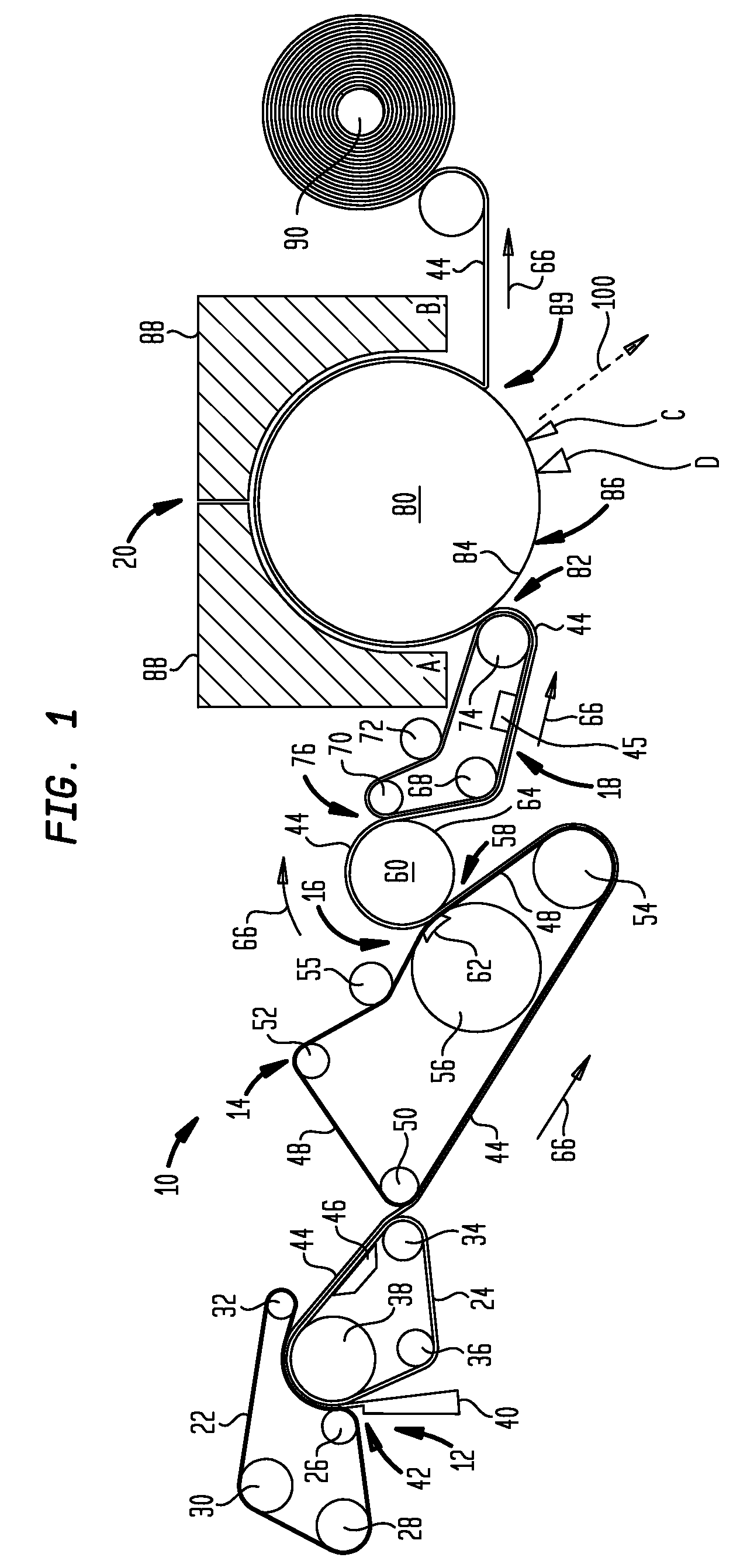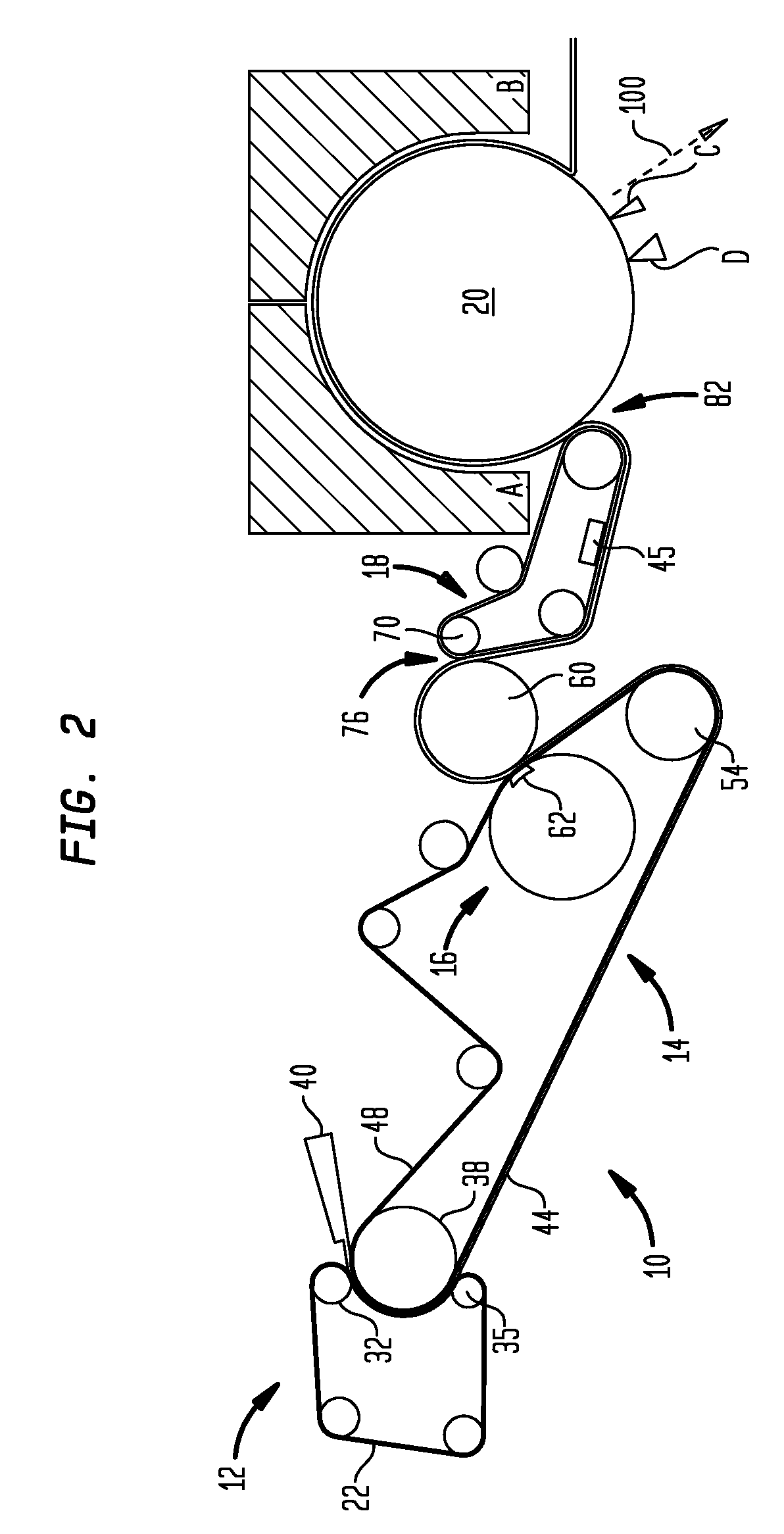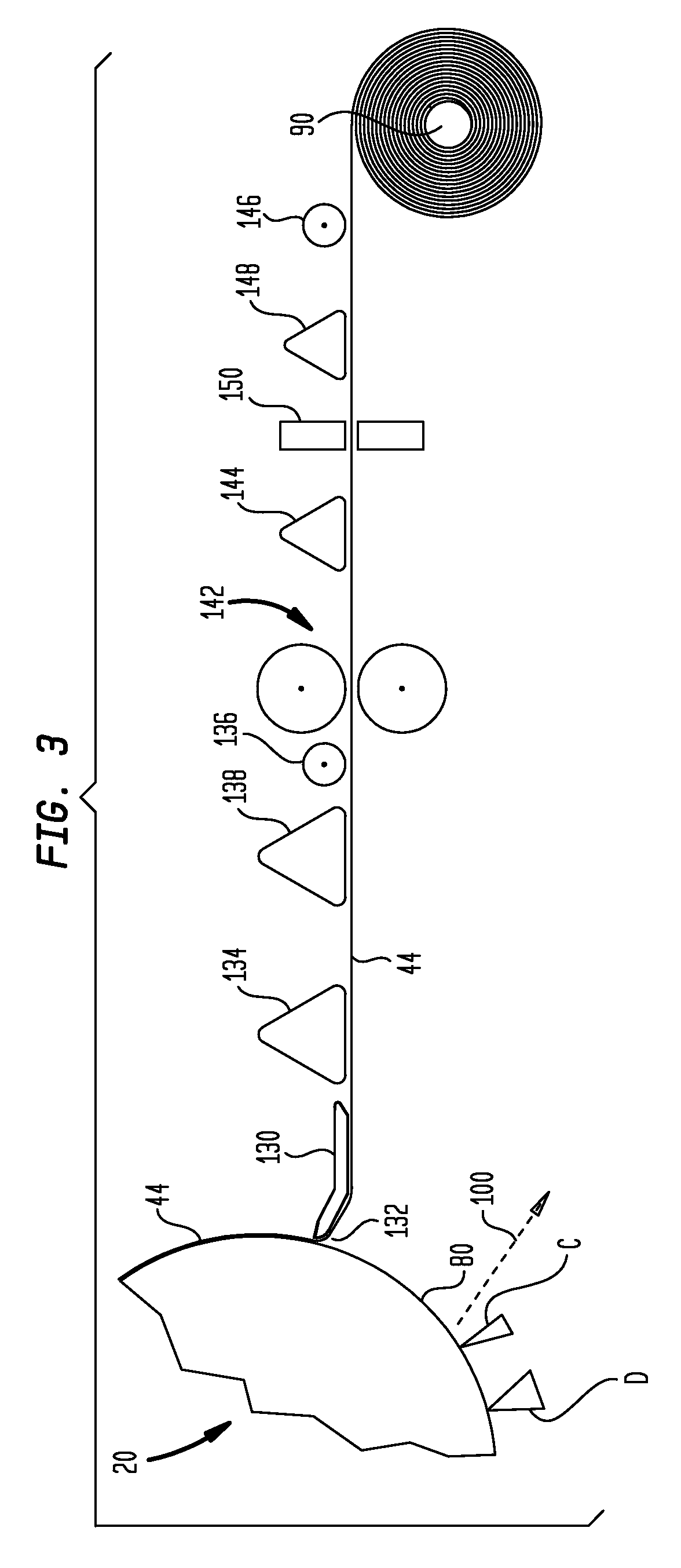Method of controlling adhesive build-up on a yankee dryer
a technology of adhesive build-up and dryer, which is applied in the field of absorbent cellulosic sheet manufacture, can solve the problems of difficult to employ recycle furnish at the level which may be desired, affecting the operation of fabric creping processes, and affecting the quality of the product. , to achieve the effect of increasing the tension and reducing the steady-state tension
- Summary
- Abstract
- Description
- Claims
- Application Information
AI Technical Summary
Benefits of technology
Problems solved by technology
Method used
Image
Examples
Embodiment Construction
[0046]The invention is described in detail below with reference to several embodiments and numerous examples. Such discussion is for purposes of illustration only. Modifications to particular examples within the spirit and scope of the present invention, set forth in the appended claims, will be readily apparent to one of skill in the art.
[0047]Terminology used herein is given its ordinary meaning consistent with the exemplary definitions set forth immediately below; mg refers to milligrams and m2 refers to square meters and so forth.
[0048]The creping adhesive “add-on” rate is calculated by dividing the rate of application of adhesive (mg / min) by surface area of the drying cylinder passing under a spray applicator boom (m2 / min). The resinous adhesive composition most preferably consists essentially of a polyvinyl alcohol resin and a polyamide-epichlorohydrin resin wherein the weight ratio of polyvinyl alcohol resin to polyamide-epichlorohydrin resin is from about 2 to about 4. The c...
PUM
| Property | Measurement | Unit |
|---|---|---|
| weight ratio | aaaaa | aaaaa |
| temperature | aaaaa | aaaaa |
| temperature | aaaaa | aaaaa |
Abstract
Description
Claims
Application Information
 Login to View More
Login to View More - R&D
- Intellectual Property
- Life Sciences
- Materials
- Tech Scout
- Unparalleled Data Quality
- Higher Quality Content
- 60% Fewer Hallucinations
Browse by: Latest US Patents, China's latest patents, Technical Efficacy Thesaurus, Application Domain, Technology Topic, Popular Technical Reports.
© 2025 PatSnap. All rights reserved.Legal|Privacy policy|Modern Slavery Act Transparency Statement|Sitemap|About US| Contact US: help@patsnap.com



